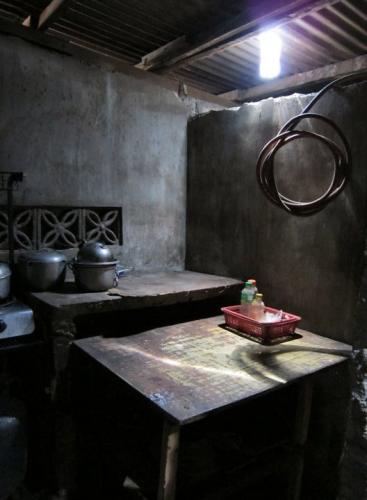What to do with all this plastic? Part 2
Creative communities get innovative and entrepreneurial with one of the world’s largest environmental hazards.
Part 1 of this series discussed the growing problems with plastic waste accumulating without necessary recycling efforts to manage the bulk of it, which ultimately ends up in our landfills, oceans and washing up on our shores and ending up in our diets. Both National Geographic and the Environmental Protection Agency deliver alarming results every human being should be aware of. In addition, consumers and citizens should also be made aware of the innovative strategies employed to make use of plastic.
There are a number of creative ways to help eliminate the surplus of plastic bottles circulating around the globe. Many of the ideas employed globally come from developing countries where resources are scarce and creative thinkers are plentiful.
- In Uganda, communities use plastic water bottles in a number of basic, but innovative ways: (A ten minute video from Uganda demonstrates these unique ideas.)
- Drip watering & Root watering
- Pesticide sprayer
- A scooper
- Seed storage
- Salt shakers
- Plant pots
- Artificial birds to scare of birds
- Funnels & filters
- Toys and even sandals
- In the Philippines, organizations have found ways to incorporate plastic bottles filled with water and a small amount of bleach into their ceilings which reflect light throughout the home, thus providing natural day light into homes without electricity and/or access to natural light. Watch a short documentary on this technique. The ingenious technique adopted is also contributing to the reduction of greenhouse gases by reducing the plastic that would otherwise end up as waste.

- In the United States, the clothing industry has adopted recycled plastics as an eco-friendly approach to reusing plastic that would normally end up as discarded waste. Recycled plastics are turned in to post consumer resins (PCR) which then are spun into fabrics and manufactured into clothing. This innovative approach to reusing plastic is in sync with sustainable business practices, which tend to focus on reducing ecological and social impacts while maintaining a company’s bottom line.
- In Michigan during 2014, Oakridge Service Learning students constructed a greenhouse made from plastic bottles collected from the community. This creative idea not only finds alternative use for plastic waste, but also creates a place to grow food locally. Growing food locally (and purchasing) decreases plastic consumption and waste as well.

Photo credit: Credit Oakridge Service Learning
While the highlighted examples are the step in the right direction and an excellent use of resources, they will not solve the global problem of plastic waste. The ultimate solution is to refrain from using plastic products where and when possible, and advocate for cleaner, safer products. You can take a number of steps to help eliminate plastic from day-to-day living, such as:
- Carrying your own bags for shopping and/or reusing bags previous acquired
- Carrying your own water bottle and/or not purchasing bottled beverages
- Researching products within your budget that are plastic-free and using them
- Buy bulk and/or shop from local farmer’s markets
- Reduce, Reuse, Recycle
- Upcycle where and when possible
You can find additional information researching the impact plastics are having on our environment and directly on our lives. The documentary, Addicted to Plastic, will appeal to a number of learners as well as two books in particular, Cradle-to-Cradle and Upcycle.
Michigan State University Office of Sustainability is actively working towards more sustainable action and living plans. In addition, Michigan State University Extension offers a variety of programs to provide expertise, education and development of communities throughout the state of Michigan. By specialists, educators, program coordinators, instructors and associates all working together across lines of specialization, great things can be developed and from the input from citizens of Michigan, relevant and life-changing programs will be delivered.
Other articles in this series:



 Print
Print Email
Email
